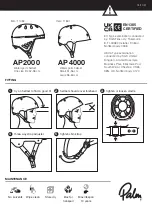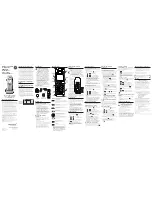
851-899 Rev. A
35
Dorner Mfg. Corp.
FlexMove FC (105 mm) Conveyor System
Preventive Maintenance and Adjustment
Start-Up and Maintenance Schedule
The chains are made of acetyl resin, which has an excellent
combination of strength, wear, chemical resistance, impact
strength and temperature range. Chain failures like breakage,
pin bending, and high wear might occur if the actual pull is
higher than the permissible chain limit. There is also high
risk of slip-stick effect if the conveyor is running at high
chain tension.
It is important for the chain to run in the correct direction.
The chain is marked with direction of travel by an arrow on
the side of the chain. Over tensioning the chain can cause
chain failure. Signs of over tensioning and overloading are
broken links or bent link pins. On catenary drive units it is
important that there is visible chain slack on the bottom of
the drive units when running.
Chain Lubrication
Lubrication of the chain where it meets the slide rails and
inside by the pin and pivot location can reduce friction -
allowing the chain to run more smoothly, quietly, and last
longer. Spray silicon with Teflon™ is the recommended
lubrication, and can be applied at the drive tail to the inside
of the chain through the slot in the catenary drive tails or
gravity take-up units.
Wear
The degree of wear on a conveyor depends on a number of
factors, such as:
• Running time
• Load, contact pressure
• Speed
• Product accumulation
• Sharp or rough products
• Chemicals
• Foreign particles, e.g. chips, grinding particles, broken
glass, sand, sugar
• Temperature
• Plain bends
Try to minimize the running time for the conveyor by
stopping it when there is no transport. Multiple horizontal
and vertical plain bends in a conveyor will often result in
increased wear.
Chain Elongation
Acetyl resin is an elastic material. In addition to the elastic
elongation, the chain will exhibit elongation because of
material creeping. The magnitude of chain elongation will
depend on the chain tension. Unless a weighted take-up is
used, the chain elongation will show up at the bottom of the
drive unit. Too much of the chain slack may cause high wear
at the drive unit entry point. Chain slack of up to 150 mm
(5.9 in.) is acceptable during normal running but any slack
longer than that is not advisable. The chain slack might also
hit on any part below it. For this case, the chain slack should
be shortened much earlier. In a normal case, chain should be
shortened after run-in time of 40 hours. The next inspection
should be made after 200 hours of running and then every
1600 hours. More frequent inspections are recommended if
the conveyor is long and has high load.
The chain should never be so tight that there is no slack
during the operation. If there is too much slack, there will be
excessive wear on the chain guides and the chain. This could
be a risk for injury. If the slack on the conveyor chain is
unacceptably high, it must be shortened by splitting the
chain and removing the necessary number of links.
• The conveyor chain must show some slack during opera-
tion (See
).
Figure 113
Figure 113
• The conveyor chain does not need to show any slack when
the conveyor chain is stationary or when a weighted take-
up is used.
















































